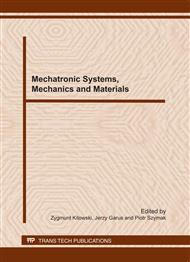p.269
p.281
p.288
p.297
p.303
p.313
p.323
p.331
p.339
Modelling of the Ship Structural Ballistic Shields from the 10GHMBA Steel
Abstract:
The contemporary protective structures are now critical elements of the floating units, military, public and other objects. Their task is to weaken the effects of a terrorist action against selected areas with the use of explosives or projectiles. The knowledge of material behaviour at high strain rates is essential for designing the ballistic shields. The hull external shells of the Polish Navy ships now in service do not meet the requirements of ballistic anti-terrorist shields against small arms shooting or the rocket and shell splinters. This is a significant problem in the case of defending a ship against terrorist attack threats. Therefore, there is a tendency for building internal and external ballistic shields in the ship hull structure to protect the critical compartments and action stations. The paper presents investigations of materials subjected to high strain rates, with the 10GHMBA E-620 bainitic steel as an example. The experiments were carried out on the MTS 810.12 testing machine, rotary impact testing hammer, the Taylor test stand and on the ballistic pendulum. In the final part of the paper, some numerical simulations are presented allowing to analyse the fast-changing processes arising during loading the structure by an impact of high velocity bodies.
Info:
Periodical:
Pages:
303-312
Citation:
Online since:
November 2011
Authors:
Price:
Сopyright:
© 2012 Trans Tech Publications Ltd. All Rights Reserved
Share:
Citation:


